The Chesley Initiative
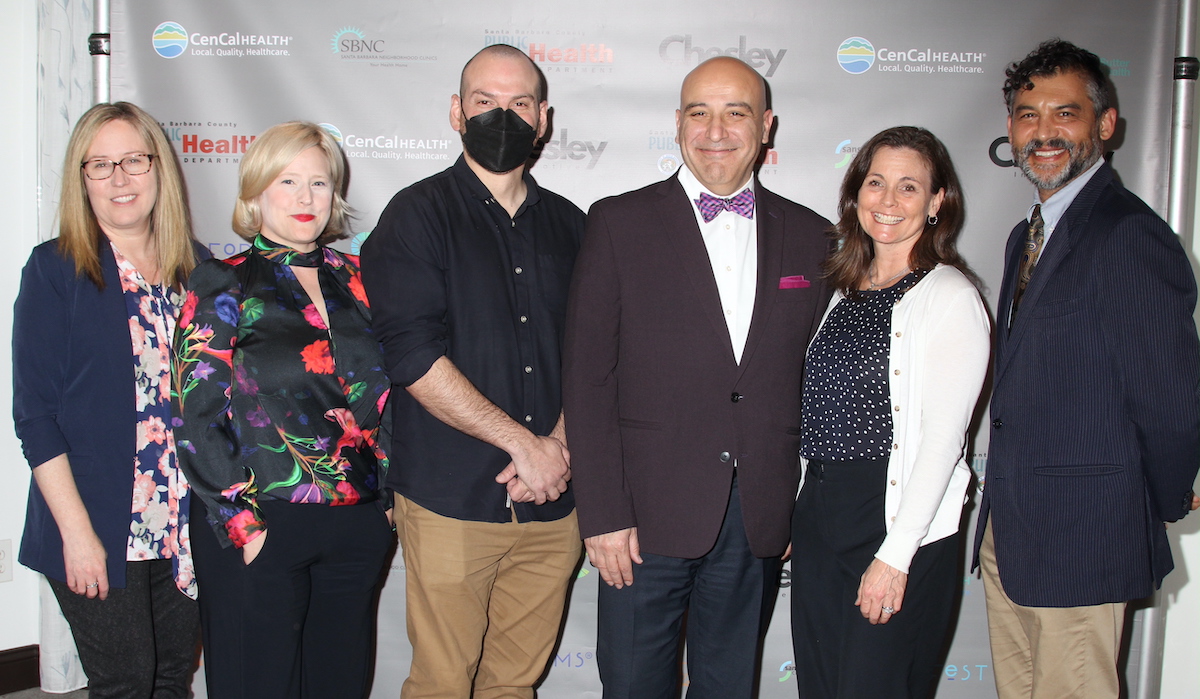
Packed Event Spreads Hope for Long COVID Victims: Will County Take National Role?
When it first made its appearance in America’s hospitals late in the year 2020, Long COVID was considered a mysterious and perhaps ‘artificially created’ illness. It had a multitude of names and even more seemingly almost unrelated symptoms. It was often devastating in its ability to attack patient’s bodies in many ways. At its worst, it was deadly. Doctors had few ideas on what to do to help heal patients.
Today, more than three years later, the number of Long COVID patients has grown exponentially. While the disease remains mysterious, it at least has been accepted by the vast majority of the medical world as having a physical and not psychological cause. It has little resemblance to its more famous predecessor, COVID-19, but it may prove as devastating. Government statistics are finally emerging about Long COVID and they are staggering.
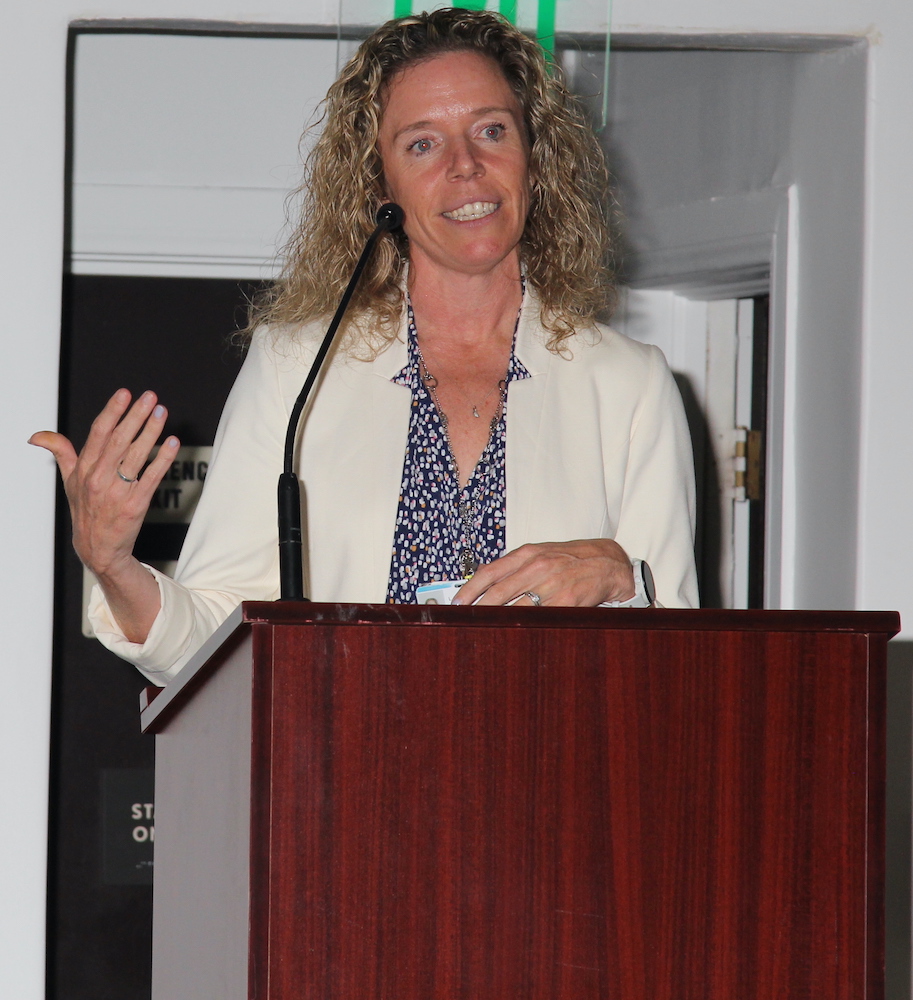
More than one out of every 13 Americans are suffering from Long COVID symptoms, according to the CDC. The disease continues to wreak havoc in all communities, including Santa Barbara. While the human suffering is intense, the attendant economic chaos is stunning. Long COVID is costing American workers and businesses nearly $1 trillion every year due to excess employee sick time. A trillion dollars, by the way, in one-dollar bills laid end-over-end, would stretch from the earth to the sun. It could buy Warren Buffet 16 times over, pay for 220 nuclear powered aircraft, and most importantly, it could have funded the building of 20,000 new grade schools. Estimates from Harvard University and other sources are that this annual $1 trillion loss will probably increase every year for at least the next five years – unless treatments and cures can be developed. So far, none have.
In a visionary effort to meet this immense challenge, at least on our local level, a leading group of more than 100 Santa Barbara area doctors, researchers, and patients met recently at the Rosewood Miramar to see if the county might take a more meaningful part in battling Long COVID.
“The evening was meant to plant a seed and see if Santa Barbara can play a bigger leading role in spreading awareness and education about Long COVID throughout the national health care community,” said Dr. Mouhanad Hammami, County Public Health Director. The Santa Barbara County Health Dept. was a sponsor of the event. “The event was extremely well attended, and I believe everyone felt passionate about what we want to do. I am optimistic and hope to create a series of such events.”
Representatives from event sponsors, Cottage Health, Sansum Clinic-Sutter Health, Cen-Cal, SB Neighborhood Clinics, and the County, all delivered strong messages about Santa Barbara’s possible leadership. The evening’s keynote speaker, Dr. David Putrino, Director of Rehabilitation Innovation for the Mount Sinai Health System, called Santa’s Barbara’s health community: “Exemplary. I believe great things can happen here.” Putrino is recognized as a world leader in the battle against not only Long COVID, but other post-acute infectious diseases.
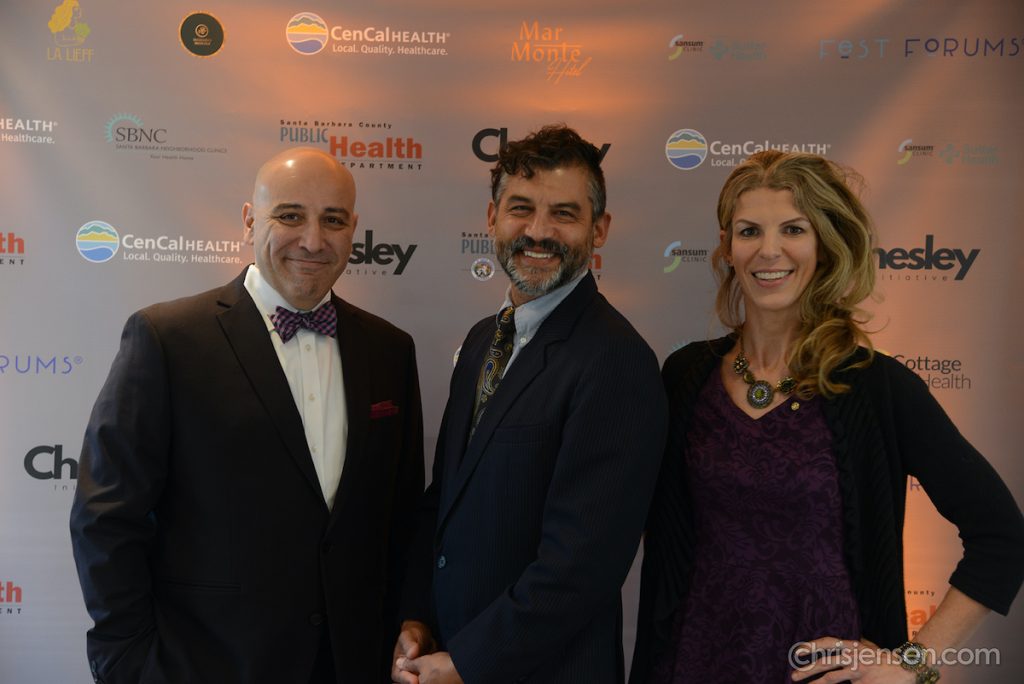
The idea that the Santa Barbara health community could become a center in the fight against these types of diseases would have been considered a long shot a few years ago. Sansum Clinic and Cottage Hospital were already battling a loss of staffing from burn-out over COVID and an increase of competition from UCLA and other health care sources. A rush of Long COVID patients overwhelmed these systems and the county’s health centers referred all cases to UCLA. Last year, however, UCLA itself reached patient capacity and refused to take further referrals from Santa Barbara.
Dr. Hammami, who took over as County Health Director only last year, stepped in and made the decision that Santa Barbara will not only attempt to deal with its own patients, it will do what it can to become a recognized center of Long COVID information and advancement. Part of this will be exploring all the ways that Artificial Intelligence and worldwide communications can help.
“We want to be on the front edge of this changing health care world,” said Dr. Lynn Fitzgibbons, an infectious disease specialist at Cottage Hospital. Fitzgibbons, one of the keynote speakers, added that utilizing AI will help area medical care become part of what she called ‘precision medicine,’ which is much needed in the diagnosis and treatment of Long COVID and other diseases. “There is so much more for us to learn. I’m excited about what we can do in the future.”
One of the major topics of the evening, which was touched upon by all the speakers, was that Long COVID must not be ignored. “All of us feel pressure from the public to move on past anything that has to do with COVID,” said CenCal Health CEO Marina Owen. “They are exhausted from it. But if we do, we’ll be leaving thousands of people behind. We can’t do that.”
County Supervisor Das Williams said, “We recently talked to about 5,000 people during a campaign and only three of them mentioned COVID as one of their major health concerns.” This is despite the fact that thousands of people in Santa Barbara County are currently suffering from Long COVID and thousands more have a variety of other post-acute infectious diseases such as Myalgic Encephalomyelitis (M.E.), Lyme’s Disease, Chronic Fatigue Syndrome, and Lupus. “It’s clear people just want to forget about COVID,” said Williams. “That isn’t an option for us, though. We have to keep fighting for people with these diseases.”
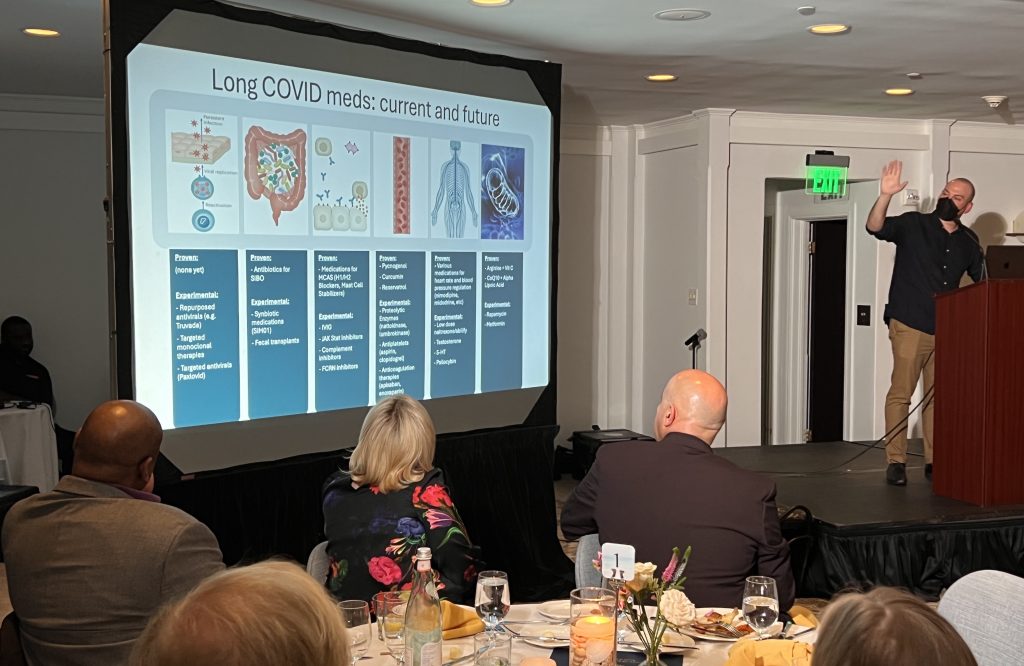
Dr. Mary-Louise Scully, an infectious disease specialist with Sansum Clinic, argued that not only should the COVID epidemic be remembered, it should provide an active model for the health care community in moving forward. “During the darkest days of the pandemic, the COVID silver lining was seeing how every health care organization in this county came together to serve the community,” she said. “It was an amazing thing, and it should be an example to follow in our continuing collaborative effort against Long COVID.”
Moving forward in a leadership position regarding Long COVID will not be easy for county health organizations. No real studies have been done to determine how many residents have the disease. Meanwhile, an even bigger issue, the one that has stalled efforts nationwide to find treatments and cures, is the fact that Long COVID has more than 200 symptoms. What makes it even more confusing is the fact that the disease typically appears in patients after they have seemingly recovered from COVID-19. Many people don’t even realize what they have is related to their initial COVID illness. Whereas COVID-19 symptoms usually emerge as flu-like, sometimes accompanied by a loss of taste and smell, Long COVID symptoms typically involve severe fatigue, brain fog (cognitive disfunction), heart palpitations, hair loss, vision loss, stomach, liver, or kidney distress and loss of sexual function.
Many Long COVID patients were asymptomatic when they experienced COVID-19, making the onslaught of Long COVID symptoms even more mystifying. Most researchers believe that in Long COVID patients, the COVID virus never dies and comes back in reactivated form to attack the body wherever the dormant virus happens to be – anywhere from the brain to the feet. Several studies are underway to determine why this occurs, including possible DNA differences in each patient. Long COVID runs counter to the original COVID virus in many ways. It often attacks younger patients, where COVID-19 was usually more dangerous to the elderly.
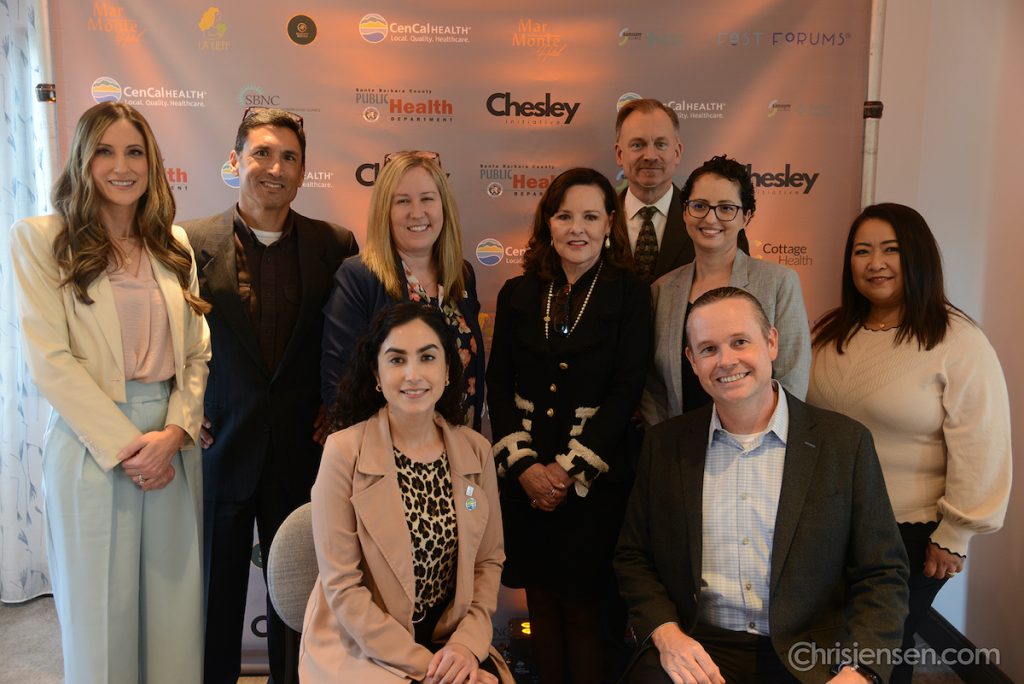
The damage Long COVID can do to a person’s life, including their emotional state, can be severe. At least 80% of people who come down with Long COVID miss a day or two of work, and nearly 30% will miss anywhere from a week to several months, according to the CDC. Notably, some Long COVID sufferers experience daily changes of symptom, a condition that has been known to persist for more than three years. Nearly all researchers worldwide agree Long COVID is a physical disease and is not merely “in the patient’s head.” Yet the physical symptoms can, and often do, cause emotional distress in the patient. Many feel alone and terribly frustrated at their failing cognitive abilities, or at any of the other symptoms. Long COVID has been blamed for thousands of suicides nationwide.
This puts great pressure on health centers. They must not only effectively diagnose patients who may be displaying dozens of symptoms, they must then determine the right treatment regimen – in a space where no treatment has a guaranteed outcome. On top of that, doctors must make certain their patients are getting the right psychological help to give them strength to deal with these cascading symptoms.
By taking on a leadership role with Long COVID, Santa Barbara County caregivers are assuming a serious challenge. But if they don’t, thousands of people will be left without help or hope.
Author’s Note
In 2021 I wrote one of the first books published on Long COVID. Since then, Congress and the nation’s medical bureaucracy, including the National Institutes of Health (NIH), have been remarkably slow in addressing the problem of Long COVID. Despite the huge economic burden it is placing on companies nationwide, no real effort has been made by the government to defeat the disease. After then, congress approved $1.15 billion for Long COVID research, NIH directors told me in a phone interview that treatments and cures would be forthcoming by the fall of 2021. None were, nor have any been developed since. That ‘development’ money was dispersed for broader “observational studies” not clinical studies that would research potential treatments or cures. Congress has yet to take any meaningful steps toward helping solve this epidemic. Sen. Bernie Sanders (D-Vermont), is reportedly trying to find support for a bill that would provide $1 billion per year for ten years on Long COVID research. While it is at least a step in the right direction, those involved say it is still a meager effort considering the huge cost Long Haulers is creating for American businesses every year. Congressional pollsters have found that many voters are tired of hearing and worrying about COVID, so most politicians are staying away from the subject. The results are tragic for many Americans. – Michael Bowker







You must be logged in to post a comment.